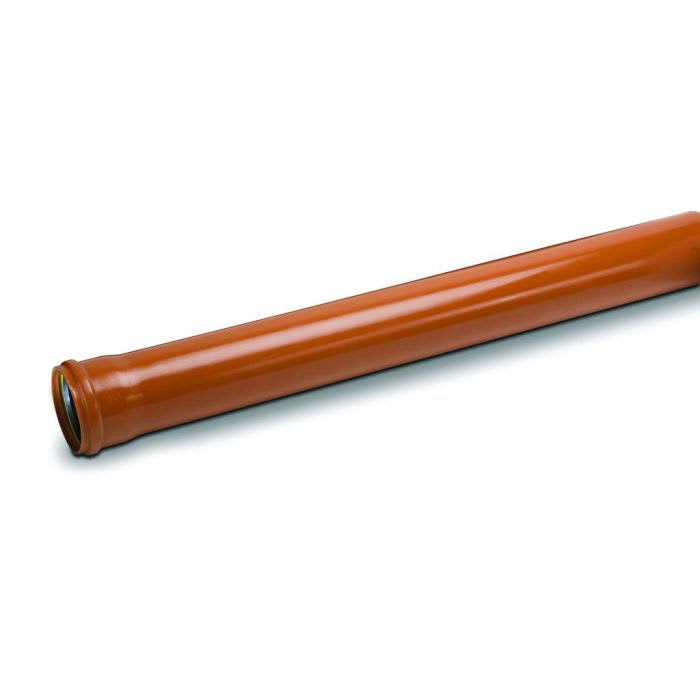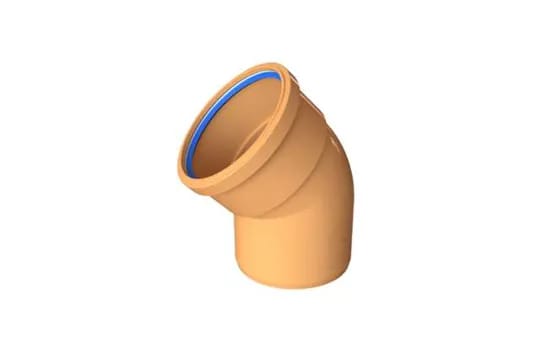Underground Drainage
(41 Products)Underground drainage refers to a system of pipes and components installed beneath the ground surface to transport wastewater, such as foul drainage or excess rainwater, to appropriate disposal or treatment facilities. It is designed to efficiently collect and channel these flows, preventing surface flooding and maintaining proper sanitation.
What is Underground Drainage?
Underground drainage refers to the comprehensive network of subterranean pipes and associated components, designed to facilitate the transportation of wastewater or rainwater runoff to designated sewage treatment facilities or, in the case of rainwater, to appropriate soakaways or natural water courses.
Typically the components that make up these complex systems are made from PVC, since plastic polymer is smooth, durable and facilitates the flow of water. It is also virtually maintenance-free when compared to the likes of clay and concrete.
We stock a host of underground drainage supplies to accommodate a range of underground drainage systems including underground pipes, underground coupling double sockets, and degree bend sockets.
Types of Drainage and Their Functions
The key components of a drainage system include products such as an underground drainage pipe, fittings (such as degree bend double sockets), catch basins, drainage fabric, bottle gullies and grids, and other specialised materials. These components work together to collect, channel, and transport water away from the building, preventing water accumulation and potential damage.
Degree Bend Double Sockets
- Purpose: Navigate corners and obstacles in drainage systems.
- Function: Allow smooth directional changes for efficient water flow.
- Features: Available in various angles for flexible installation, maintaining the drainage network's integrity.
Bottle Gully and Grid
- Purpose: Collect surface water and connect it to the underground drainage system.
- Function: Prevent odours and gases from escaping and keep debris out while allowing water to pass.
- Features: Ideal for areas prone to surface water accumulation, such as driveways and patios.
Underground Pipe
- Purpose: Transport water away from the building's foundation.
- Function: Provide a durable, corrosion-resistant conduit for water flow.
- Features: Available in materials like PVC or HDPE, and solid or perforated forms. Perforated pipes are used in systems like French drains to disperse water into the ground.
How To Install Underground Drainage
It is crucial to adhere to local building codes, regulations, and guidelines during the installation process to ensure a safe and effective underground drainage system.
It is recommended to consult with professionals or contractors experienced in drainage installations for assistance and compliance with relevant standards.
The installation process for underground drainage typically involves the following steps:
- Planning and Design: A thorough assessment of the site is conducted to determine the drainage needs, including the identification of the appropriate pipe size, gradient, and layout. A detailed plan is created to guide the installation process.
- Excavation: Trenches are dug along the designated path of the drainage system, ensuring they have the correct depth and width to accommodate the pipes and fittings. Proper safety measures are implemented during excavation.
- Bedding Preparation: A layer of granular material, such as sand or pea shingle, is placed at the bottom of the trench to provide a stable and even foundation for the pipes. This bedding material helps distribute loads and reduces the risk of damage.
- Pipe Installation: The pipes and fittings are carefully positioned within the trench according to the planned layout. Connections between pipes are made using appropriate sealing techniques, such as solvent welding or rubber seals, to ensure watertight joints.
- Slope and Alignment: The pipes are laid with the correct gradient to allow for the proper flow of wastewater or rainwater. This ensures that the drainage system operates efficiently and prevents the accumulation of stagnant water.
- Backfilling: Once the pipes are in place and aligned correctly, the trenches are backfilled with suitable material, such as granular fill or compacted soil, taking care to avoid damaging or displacing the pipes. Backfilling is done in layers, with each layer compacted to provide stability.
- Inspection and Testing: The installed drainage system is inspected to verify the proper alignment, connections, and overall integrity. Various tests, such as water testing or smoke testing, may be conducted to identify any leaks or defects that require rectification.
- Covering and Restoration: The excavated area is restored by replacing the topsoil and any disrupted surfaces. Landscaping or paving materials are reinstated, ensuring that the surrounding area appears aesthetically pleasing and functional.
How To Cut Underground Pipes
PVC pipes can be readily sawn through with a simple hacksaw or a saw with fine teeth. While the cutting process itself is fairly simple, cutting plastic almost always leaves behind a serrated edge. Inserting a cut pipe in this state could comprise the effectiveness of the pipe's seal and thus the overall integrity of the system.
A quick remedy is to use a chamfer tool to gently shave down the excess edges. For good measure, the seal should then be lubricated with an appropriate purpose lubricant to ensure a seamless connection and secure fit.
Frequently Asked Underground Drainage Questions
What Are Some Common Types of Drainage Systems?
Common types of drainage systems include French drains, where a perforated pipe is surrounded by gravel to facilitate water absorption, and surface drainage systems that utilise trench drains or permeable pavers to direct water runoff away from the building.
Additionally, underground pipes are used to transport water away from the building's foundation.
How Can Drainage Systems Be Integrated Into Building Design?
Drainage systems can be integrated into building design through careful planning and consideration.
Architects and engineers work together to determine the optimal placement of drainage components, such as catch basins, underground pipes, and drainage outlets.
This integration ensures that water is effectively managed while minimising any visual impact on the building's aesthetics.
What Are Sewer Pipes?
Sewer pipes are the backbone of an underground drainage system, responsible for transporting wastewater away from buildings to a sewage treatment facility.
A sewer pipe is designed to be robust, durable, and resistant to the corrosive effects of wastewater. PVC-U sewer pipes, in particular, offer numerous advantages due to their excellent chemical resistance, longevity, and ease of installation.
PVC-U pipes are available in various sizes and are fully compatible with other components of the drainage system.



















